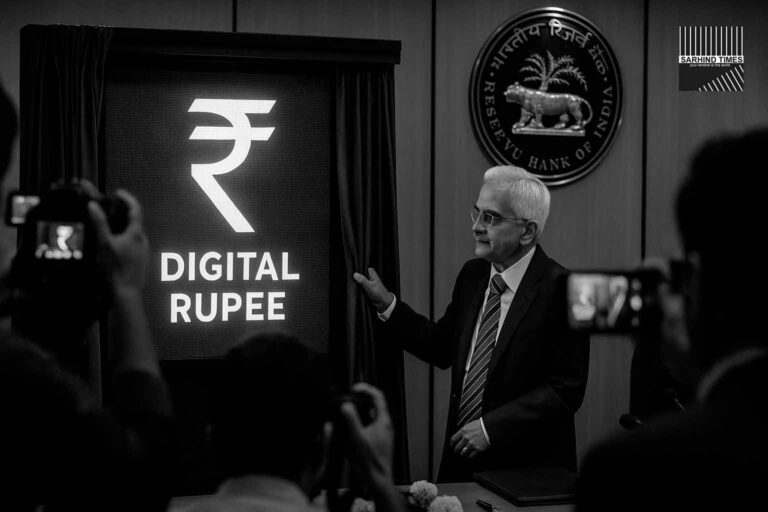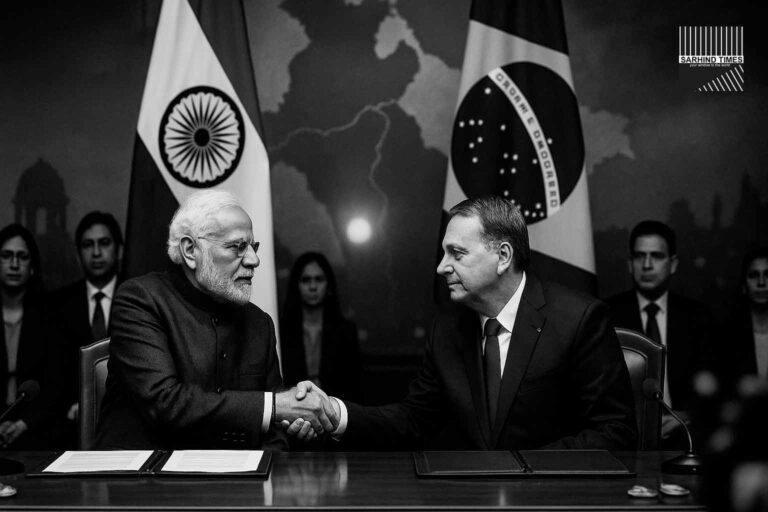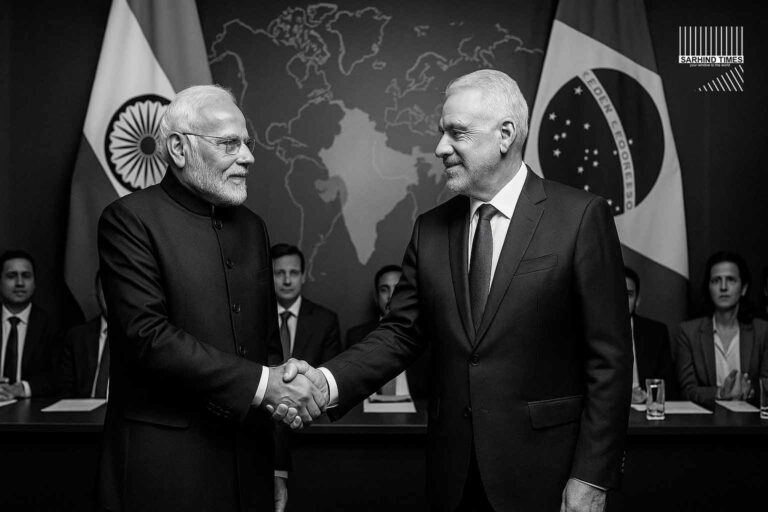In a significant leap for India’s human spaceflight ambitions, the Indian Space Research Organisation (ISRO) will deploy an Artificial Intelligence-powered navigation and decision-support system for astronaut training and mission control in its upcoming Gaganyaan program. The system will assist astronauts with real-time diagnostics, situational awareness, and contingency management — marking the first time India integrates AI into crewed spaceflight operations.
Bengaluru, October 22 —
India’s first human space mission, Gaganyaan, is preparing to enter its most advanced phase — powered not just by rockets, but by artificial intelligence.
The Indian Space Research Organisation (ISRO) confirmed that it has begun testing an AI-driven navigation and mission management system to support astronauts during launch, orbit, and re-entry operations.
“AI will act as a digital co-pilot,” said Dr. S. Somanath, Chairman of ISRO.
“It will process telemetry, predict anomalies, and guide astronauts through decision-making when time is limited.”
This innovation — designed by Vikram Sarabhai Space Centre (VSSC) and ISRO Inertial Systems Unit (IISU) in collaboration with DRDO’s AI Research Lab — marks a paradigm shift in how India approaches space safety and autonomy.
Gaganyaan: India’s Giant Leap
The Gaganyaan Mission, slated for its maiden crewed launch in 2026, aims to send three Indian astronauts(Vyomnauts) into low Earth orbit for up to seven days.
It is India’s most ambitious scientific venture yet, representing technological independence, strategic capability, and human exploration.
AI integration is now being seen as the “fourth astronaut” — a cognitive assistant that learns, adapts, and supports real-time human judgment in the high-risk environment of space.
“Human intuition and machine precision must coexist — that’s the essence of Gaganyaan,” said Dr. Tessy Thomas, Project Director at DRDO.
Why AI Matters in Space Missions
Spaceflight is an unforgiving domain where milliseconds matter.
A human brain takes around 200 milliseconds to process a warning, while an AI model can analyse and respond to sensor anomalies in under 10 milliseconds.
The new ISRO AI system, codenamed “VyomAI”, uses a combination of neural networks and predictive algorithmsto:
- Continuously monitor 2,000+ telemetry parameters,
- Simulate failure scenarios in real-time,
- Recommend corrective actions during emergencies,
- Cross-verify astronaut decisions against mission safety models.
“AI won’t override human control — it complements it,” explained Dr. N. Ramesh, head of ISRO’s Mission Autonomy Division.
Key Features of VyomAI
The AI module will be embedded in both training simulators and onboard flight computers.
Core features include:
- Real-time Fault Prediction: Machine learning models trained on past mission data (Chandrayaan, PSLV, and Reentry Capsule experiments).
- Speech Recognition Interface: Allows astronauts to issue voice commands even during high G-force or radio static.
- Adaptive Learning: The system “learns” from each training simulation, refining future recommendations.
- Cognitive Fatigue Detection: Monitors biometric data (heart rate, blink rate) to assess stress and suggest recovery intervals.
The Training Phase
Astronauts selected for Gaganyaan are currently undergoing advanced training at the Astronaut Training Centre (ATC)near Bengaluru, assisted by experts from Russia’s Gagarin Cosmonaut Centre.
AI modules are being introduced in simulation chambers where astronauts practice responses to hundreds of contingency scenarios — from oxygen leaks to computer malfunctions.
“VyomAI acts as a dynamic instructor,” said Wing Commander Rakesh Sharma (Retd.), India’s first astronaut and advisor to the training program.
“It challenges the trainees’ decisions and explains consequences instantly.”
The AI engine provides feedback on reaction times, prioritisation, and accuracy, helping refine decision-making under pressure.
AI in Onboard Mission Control
Once in orbit, VyomAI will:
- Track spacecraft position using sensor fusion from star trackers, gyroscopes, and accelerometers,
- Predict orbital drift,
- Auto-correct attitude deviations using thruster adjustments,
- Diagnose environmental control system performance.
If communication with ground control is lost — as may occur during solar interference or re-entry blackout — the AI will take limited autonomous decisions to stabilise life-support systems and preserve energy.
“It’s like having a second brain inside the spacecraft,” said Dr. P. Rajeev, ISRO’s Chief Flight Software Engineer.
Collaboration with DRDO and Startups
The Defence Research and Development Organisation (DRDO) contributed modules for AI-based health monitoringand emergency response automation.
Additionally, Indian startups like GalaxEye, Astra AI Labs, and Skyroot Innovations are collaborating on subcomponents including AI cameras and micro-satellite data relay for post-launch communication.
The collaboration underscores the government’s Atmanirbhar Bharat vision in advanced space technology.
Technical Overview
- Architecture: Hybrid neural network with redundancy protocols.
- Processing Unit: Radiation-hardened processor based on ISRO’s Vikram-2000 chip.
- Algorithm Training: Data sourced from 40 previous missions, including Chandrayaan, Mangalyaan, and PSLV launches.
- Power Efficiency: Operates on 45 watts with adaptive cooling to withstand 120°C temperature swings.
The system has undergone 1,000+ hours of hardware-in-loop simulation at the ISRO Inertial Systems Unit (IISU).
Global Comparisons
NASA’s Artemis program uses AI-assisted fault prediction, and SpaceX’s Crew Dragon capsule integrates real-time AI guidance with touchscreen control.
However, India’s VyomAI is distinct for being designed entirely in-house, optimised for cost efficiency and local conditions.
“What SpaceX achieved with billions, India is attempting with brilliance,” said Dr. Sarah Noor, international space analyst at the European Space Policy Institute.
Human-Centric Design
ISRO engineers emphasised that AI must remain explainable and transparent.
VyomAI features an Explainable AI (XAI) module that visually displays reasoning for every decision or warning, allowing astronauts to override it if necessary.
“Trust comes from understanding, not automation,” said ISRO flight psychologist Dr. Priya Iyer.
The user interface is multilingual — English, Hindi, and Telugu — reflecting India’s linguistic diversity even in space.
Safety and Redundancy
Every AI module has a fail-safe human backup.
If the system detects self-malfunction, it isolates affected subsystems and transfers control back to manual mode.
Critical parameters like oxygen pressure and cabin temperature are always dual-monitored by both human and machine.
ISRO calls this philosophy “Human-in-the-Loop AI.”
Integration with Ground Systems
Ground mission control at ISRO Telemetry, Tracking and Command Network (ISTRAC) will receive parallel AI alerts during the mission, allowing cross-verification between space and Earth systems.
AI-driven mission dashboards will assist controllers in predicting hardware stress and re-entry windows with unprecedented precision.
Psychological Support and Human Factors
Space missions are mentally taxing. VyomAI will also function as a psychological companion, capable of voice interaction, entertainment, and motivation scripts based on sentiment analysis.
“Isolation is the invisible hazard of space,” said Dr. Megha Menon, ISRO psychologist. “Even a machine voice that responds empathetically can make a difference.”
This echoes NASA’s experiments with “CIMON,” the AI assistant aboard the ISS — but VyomAI will use Indic emotional cues for authenticity.
National Significance
Beyond science, Gaganyaan represents a symbol of India’s technological sovereignty.
Integrating AI strengthens India’s standing among elite nations — the U.S., Russia, and China — capable of human spaceflight and cognitive autonomy in orbit.
“This is not just a mission to space — it’s a mission to self-reliance,” said Minister Jitendra Singh, Minister of Science and Technology.
Broader Applications
ISRO intends to use VyomAI’s architecture for:
- Satellite health management,
- Autonomous lunar rovers (Chandrayaan-4),
- Drone navigation, and
- Defence flight systems.
The technology could also trickle down into civilian sectors like aviation, maritime logistics, and rail safety, echoing how space innovation historically drives industrial transformation.
Economic and Strategic Implications
Analysts estimate that the AI integration reduces mission risk costs by 15% and operational costs by ₹400 crore annually across ISRO programs.
The technology’s export potential is high — especially for emerging space nations seeking affordable AI solutions.
The move aligns with the government’s Vision 2047 roadmap, envisioning India among the world’s top three space economies.
Challenges Ahead
- AI Reliability: Algorithms must perform flawlessly in zero-gravity and radiation-heavy environments.
- Hardware Durability: Radiation shielding remains a challenge for deep-space missions.
- Ethical Considerations: Balancing autonomy with human accountability in critical systems.
ISRO is collaborating with the AI Ethics Board under MeitY to codify operational boundaries before launch.
Future: The AI Astronaut?
Though VyomAI is currently an assistant, ISRO scientists acknowledge that future iterations might evolve into fully autonomous robotic astronauts for maintenance missions or lunar exploration.
“The line between support system and crew member will blur — the future may see a human and AI sharing command,” hinted Dr. Somanath.
Conclusion: The Mind Beyond Earth
As India prepares to send its citizens into space, it is also sending its mind — in the form of algorithms — to safeguard them.
VyomAI embodies the nation’s ability to blend ancient wisdom with cutting-edge intelligence, human courage with digital guardianship.
“In space, the human heartbeat must sync with the machine’s pulse,” said Dr. Tessy Thomas. “When that happens, humanity truly becomes interstellar.”
#ISRO #Gaganyaan #ArtificialIntelligence #VyomAI #SpaceTechnology #IndiaInSpace #DRDO #SarhindTimes





+ There are no comments
Add yours